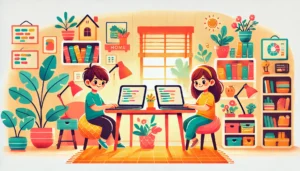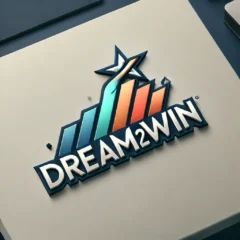The digital age demands tech-savvy thinkers, problem-solvers, and innovators. With industries from healthcare to finance relying on code, programming is no longer just a skill—it’s a superpower. Starting early isn’t just an advantage; it’s a necessity. Here’s how learning coding from childhood can shape efficient, future-ready programmers.
Why Start Coding Early?
1. Kids Learn Faster (and Better)
Children’s brains are wired for rapid learning. Studies show that kids aged 7–12 absorb new concepts like computational logic and algorithmic thinking 3x faster than adults. Early exposure helps them master coding fundamentals naturally, much like learning a second language.

2. Builds Problem-Solving Muscles
Coding teaches kids to break complex problems into smaller, manageable steps. For example, creating a simple game in Scratch requires planning characters, rules, and outcomes—a process that sharpens logical reasoning and creativity.
3. Future-Proofs Careers
By 2030, the U.S. Bureau of Labor Statistics predicts a 25% surge in software developer jobs. Coding literacy will be as critical as math or reading for tomorrow’s workforce.
Age-Appropriate Coding Pathways
Ages 5–8: Playful Introduction
- Tools: Block-based platforms like Scratch Jr or Code.org’s Hour of Code.
- Focus: Basic sequencing, loops, and cause-effect logic through games and animations.
Ages 9–12: Structured Learning
- Tools: Scratch, Tynker, or LEGO Mindstorms (for robotics).
- Focus: Building interactive stories, simple apps, and understanding variables/conditions.
Ages 13–18: Real-World Skills
- Languages: Python, JavaScript, or HTML/CSS.
- Projects: Develop websites, mobile apps, or AI models using platforms like Replit or Glitch.
Top Resources to Kickstart the Journey
| Tool | Best For | Why It Works |
|---|---|---|
| Scratch | Visual storytelling & games | Drag-and-drop blocks teach logic seamlessly. |
| CodeCombat | Gamified Python/JavaScript learning | Kids learn syntax while battling ogres. |
| Robo Wunderkind | Robotics & hardware integration | Combines coding with hands-on building. |
| Khan Academy | Web development & algorithms | Free, structured courses with projects. |
Overcoming Challenges
❌ Myth: Coding Is Too Hard for Kids
Reality: Tools like Scratch simplify abstract concepts. Even kindergarteners can code a cartoon!
❌ Myth: Screens Harm Development
Reality: Purposeful screen time (e.g., coding apps) boosts cognitive skills. Balance is key—pair coding with outdoor play.
️ Parental Tips
- Start small: 20–30 minutes daily.
- Celebrate mistakes: Debugging is where growth happens!
- Join communities: Platforms like CoderDojo offer mentorship and peer support.
Future-Proofing Skills for the AI Era
While AI tools like ChatGPT can write code, human programmers bring creativity and ethical judgment. Teach kids to:
- Code with AI, not depend on it.
- Understand ethics: Discuss bias in algorithms or data privacy.
- Learn continuously: Tech evolves fast—adaptability is everything.
Expert Insight: What the Pros Say
“Coding isn’t just about syntax—it’s about fostering a growth mindset. Kids who code early learn resilience, curiosity, and how to turn ideas into solutions.”
– Linda Liukas, Author of Hello Ruby and Coding Advocate.
5 Steps to Raise a Coding Prodigy
- Make It Fun: Use games, robotics, or app-building challenges.
- Link to Interests: Code Minecraft mods or design fan websites.
- Encourage Collaboration: Pair programming builds teamwork.
- Showcase Real-World Impact: Highlight how code powers apps like TikTok or self-driving cars.
- Celebrate Milestones: Publish their first app or enter a hackathon.
The Bottom Line
In a world run by code, childhood coding education isn’t optional—it’s foundational. By starting early, kids gain fluency in the language of technology, resilience in problem-solving, and a head start in tomorrow’s job market. Equip them with these skills, and they’ll not only survive the digital era—they’ll shape it.
For more stories like this follow our Homepage.
